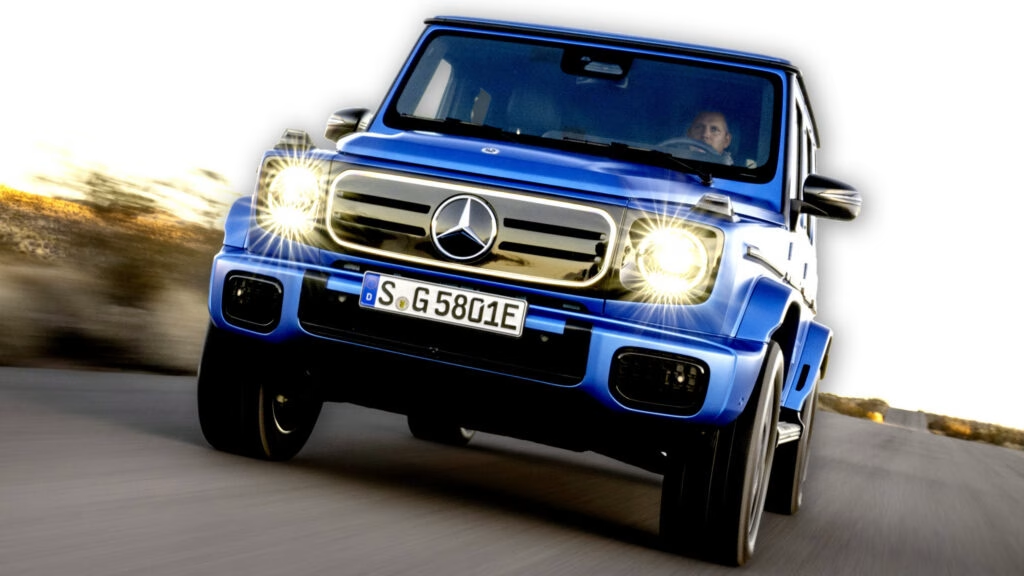The electric vehicle (EV) market is a rapidly evolving landscape, and not every beloved model is making the transition smoothly. Take the iconic Mercedes-Benz G-Class, for instance. While the brand celebrated the electric version’s launch with much fanfare, the reality has been starkly different. Sales figures reveal a troubling trend: the electric G-Class is struggling to find its footing, with internal combustion engine (ICE) versions outselling it by a staggering seven to one. So, what’s going on?
Why Is the Electric G-Class Struggling?
The G-Class has long been a symbol of luxury and ruggedness, but the electric variant seems to be missing the mark. According to reports, the all-electric G580 EQ has not performed well since its introduction last April. With a price tag of around $161,500 in the U.S., it’s not just a luxury purchase; it’s a significant investment. However, by the end of April, only 1,450 units had been sold in Europe, with dismal numbers in other markets like South Korea and China. In fact, there were claims that not a single unit had been sold in the U.S., although that figure is under scrutiny.
The electric G-Class’s poor sales can be attributed to several factors. For starters, its design mirrors that of the ICE model, which might not be enough to entice buyers looking for the spaciousness and efficiency typically associated with EVs. Instead of the flat floors and roomy interiors that many EVs offer, the electric G-Class retains the dimensions of its gas-guzzling counterpart. This lack of space efficiency, combined with a towing capacity that leaves much to be desired, has left potential buyers unimpressed.
What About the Baby G-Class?
In light of the electric G-Class’s disappointing performance, Mercedes is now contemplating a significant shift in strategy for its upcoming baby G-Class. Initially intended to be an EV-only model, there are discussions about adapting it to accommodate an ICE or hybrid powertrain. This pivot is particularly interesting given that the baby G-Class is built on the same architecture as the new CLA, which supports both electric and combustion engines.
This flexibility could be a game-changer. If Mercedes decides to go this route, it could appeal to a broader audience, especially luxury buyers who still favor the traditional power and prestige of a powerful petrol engine. The G-Class has always been about more than just transportation; it’s a statement piece, and many consumers are still drawn to the roar of a combustion engine over the quiet hum of an electric motor.
The Broader Market Trends
The struggles of the electric G-Class reflect broader trends in the luxury SUV market. Many luxury buyers remain hesitant to embrace electric vehicles fully, often citing concerns about range, charging infrastructure, and the driving experience. The G-Class, with its storied legacy, is a prime example of how even the most iconic models can face challenges in adapting to new technologies.
Mercedes has acknowledged these hurdles, stating earlier this year that they would continue to invest in ICE technology while also introducing new electric models. This dual approach could help them navigate the transition period as consumer preferences evolve.
What Lies Ahead for Mercedes?
As the automotive industry continues to grapple with the shift to electric power, it’s clear that not every model will transition seamlessly. The electric G-Class’s struggles might prompt Mercedes to rethink its strategy, especially with the baby G-Class on the horizon. If they can successfully blend the luxury and performance that buyers expect with the benefits of modern technology, they might just find a winning formula.
The big takeaway? The journey toward electrification isn’t about perfection—it’s about making smarter adjustments. Whether it’s rethinking the powertrain of the baby G-Class or enhancing the electric G-Class’s appeal, every step counts. If you’re in the market for a luxury SUV, keep an eye on these developments; they could shape the future of the G-Class and beyond.

